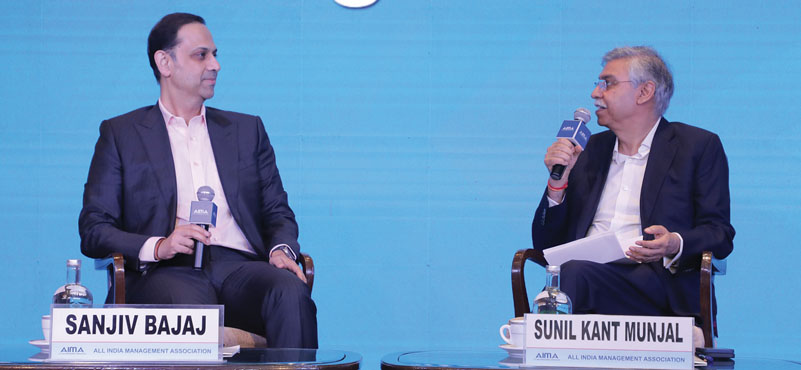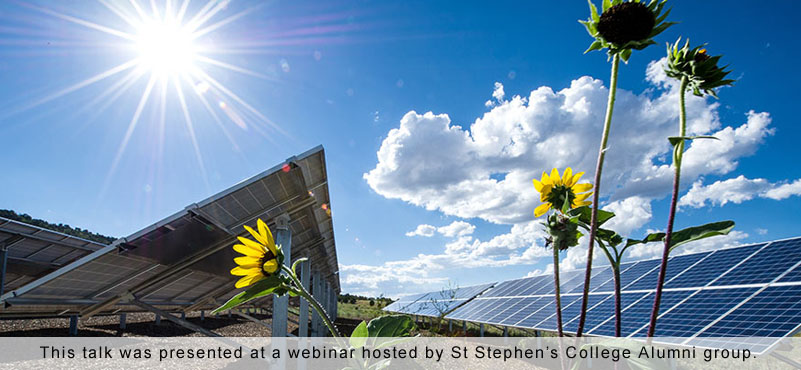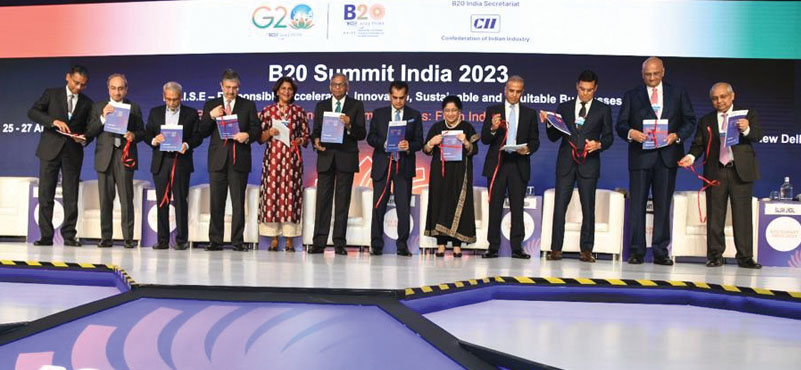The two share a common pedigree! Belonging to the original two-wheeler world, those of Bajaj and Hero, these two have grown in their respective businesses around the same time. What does the future hold? How are values important in this eco-system of modern business? Let us find out in this abridged conversation between the two maestros:
The conversation today, was supposed to be, and I am saying, supposed to be, by the way, on digital technologies, as especially as they apply to the financial services. But if you are OK with it, I would like to make it a little bit more open, a little bit more personal. And maybe the audience will find that also more interesting than only a conversation on technology, which we hear a lot about nowadays. Let me begin by asking you a little bit, about home. You know, since our families are well known to each other, I have known your father and your brother, both, quite well. And they are both pretty strong personalities. And I am putting it mildly, by the way. And you, on the other hand, have this very quiet demeanour. I was trying to wonder if there was an argument on the dining table at home, and I am sure there must have been every now and then how would they actually get resolved?
So, Sunil, it is good to be here. And as you said, we have more similarities than, many other people that we know, and equally strong personalities on both sides. Definitely, very smart ones on both sides. The simple answer to your question is that when somebody takes the lead to talk, someone else has to take the lead to listen and, being the younger brother, having a father as aggressive as mine, you learn very quickly that it is better to first listen, let some of the steam blow off and then present your point of view. And, I am of course, saying that part partly jokingly. But partly that was my experience, with my father, because for some of you who may have seen him on television, or otherwise at some of these events, he had a strong point of view. He made sure that his point of view got heard, got discussed. That was not for the stage. That is how he was 24×7. That is how he was at home growing up when we were kids. That is how he was. So, in many ways, we were used to him being like that, but I always found of him that once you gave him a few minutes and then presented your point of view, he heard it very seriously. And if you could present a point of view different from his, but logically, he very often accepted it and then supported you fully as well. And we used to joke in his later years, where, I used to tell him that because we both went to Harvard Business School, I used to tell him that we have both learned the same thing, that we can argue both sides of the issue. But you do not have to argue that every time at work. I also know that, and he would start laughing. But that was him.
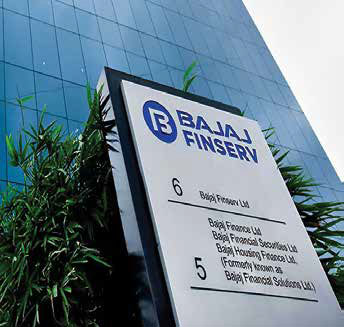 I am also told you were forced by your father to walk to school one day when he learned that you were using the family car. Is there a message you think? And is there a lesson for many who try and give the best to their children? What kind of learning do you think are important, especially in today’s world, both material and highly facilitating?
I am also told you were forced by your father to walk to school one day when he learned that you were using the family car. Is there a message you think? And is there a lesson for many who try and give the best to their children? What kind of learning do you think are important, especially in today’s world, both material and highly facilitating?
So, we grew up, on the factory campus outside of Pune, which is where the first Bajaj factory came up, my father moved from Mumbai and set up house in the colony. Most of our senior management stayed in the city, which is about 30 kilometres away. Their children went to the schools in the city. But my father was very clear that if he was from Mumbai going to move to Pune, he wanted to be where the factory was. And we had a colony where we had probably 3/400 families, mostly middle lower middle class over there. And there was a very good convent school that had started nearby. These were Swiss missionaries. So, it was a good quality school. But the student that went there came from middle-class, low-class families, our drivers, our security staff, and those in the junior levels not only in Bajaj Auto, but the SKF, TATA Motors. My mother and father were both very clear that that is the school we must go to, because that is the India that we live in. And they knew that the school was of good education, so they would not compromise on that. So, I finished my 10th grade there, and it didn’t have 11th and 12th at that time. So, I went to the Junior college in the city. We went on the school bus, and I remember we used to walk from home to the school bus and with everybody else, go to school.
One day either my sister, Rajiv or me, one of us got late. So, my mother said, OK, we had this ambassador car and she said, OK, the car will drop you. So, we said, OK, went in the car and came back. The next day must have been Rajiv with me because my sister was too scared of my parents we said “Let’s do it again”. So, we did it again. 2 /3 days went like this. Suddenly we were all feeling really happy. And then the next day, when we got ready, instead of my mother being outside my father was standing there and he was always a late riser, so he normally was never there. We were shocked. And he said, you will walk to school. So, so we had one staff member and the walk was a 20-minute walk. It was not far at all. And what we were all scared of was the school had very high levels of discipline by the Swiss nuns. We feared reaching the school after the bell had rung the start bell. And that is what happened. And we got punished in school. Of course, we always made sure that we woke up in time after that. But the grounding that that brought us and the people we hung around with many of my friends who are still from the school days from the time that we were three years old, we still meet once a month, at least for dinner.
My children went to a similar school. We set up a second school. Then when the number of people kids became very high, so they went to the same school as well.
Tell us, what were the learnings that you found in the early days of this transformation, and how much would you have imagined at that time would be the impact of digitalization when you were starting off.
 So first I must mention Sunil from some of the things you mentioned earlier. You all have done your homework over here. I spent 10 years in Bajaj after I came back from Harvard BS from 97 to 2007. Around 2005 is when some of our large institutional investors in Bajaj Auto told us that, you know, you guys have invested in a set of financial services businesses That was all done through because that was a cash cow for the group. But over a period of time, you will have auto and financial services in one basket. And that’s not necessarily what every investor wants, because you have investors with different appetites and interests. And we went through the process of demerger – out went the financial services business in 2007/2008. That’s when I moved from Bajaj Auto to start rebuilding financial services, which at that time was Bajaj Finance.
So first I must mention Sunil from some of the things you mentioned earlier. You all have done your homework over here. I spent 10 years in Bajaj after I came back from Harvard BS from 97 to 2007. Around 2005 is when some of our large institutional investors in Bajaj Auto told us that, you know, you guys have invested in a set of financial services businesses That was all done through because that was a cash cow for the group. But over a period of time, you will have auto and financial services in one basket. And that’s not necessarily what every investor wants, because you have investors with different appetites and interests. And we went through the process of demerger – out went the financial services business in 2007/2008. That’s when I moved from Bajaj Auto to start rebuilding financial services, which at that time was Bajaj Finance.
The one thing that I knew was that I knew nothing about financial services, so I knew I needed a good team. Second, I was fortunate that, an uncle of mine, my mother’s sister’s husband called Nanu Pai, who was a career city banker.
Actually, I was going to ask you about Nanu……
So, Nanu was a mentor. He had retired from Citibank just then, spending 40 years in Citibank. And my father requested him saying that Will you help Sanjiv build these businesses? And he, uh right away agreed. nd he used to be in Bombay every Tuesday morning. He used to be in office, driving from Mumbai. He used to be the first one there at 8.15. Meeting started at 8.30. We used to finish by six. He used to drive back to Bombay. He helped put in place processes, the right discipline. He had the right experience.
We would give up short term opportunities if that came in the way of the kind of capabilities we wanted to build in the long term. I was very clear that coming from a business family, I had this freedom within a set of broad guidelines set by the board to go and build business as I felt appropriate to me. We are very clear that we are in the risk business, and hence we will always choose risk over growth. I think that is what has helped us put the best practises in place over the last decade, decade and a half, which has helped us through these tough periods.
No, it’s actually quite fascinating from inheriting a financial services firm which was really only supporting motorcycle sales at one point in time to building this behemoth of financial services. I want to pick on a comment you made once that if you were to send a man to Mars, you would lean on expertise from the West. But if you were to have that person survive for long term on the Mars, you would look at knowledge and resources from the East. Why did you say this?
You see, when we have built our businesses, we have also looked at partnerships from around the world, especially there is so much that is happening in the startup field. There’s so much innovation and ingenuity that we see there, that we keep scouting for it. And we been doing this across the world, both in the West and the East, what we find with the West. The West ends up being very transactional. If you want to go and buy a product, you want to buy a service in a very predefined clear manner. It is very simple. It is very open. It is very transparent. But if you are building something for the long term, and this is based on long term relationships, I think that tradition, those values exist more in the East. So that is why if you have a specific project that you want to go and do, which is landing on Mars, do it to the West. But if you must live there more long term, you must think more long term. We find that companies in the East culturally are more aligned now. This could also be an issue of a point in time. 50 years down the line, it could be different.
And you’ve been, as I was saying earlier, one of the clear leaders in the industry. The other interesting thing that has happened at the same time is this digital access across India. The availability of a digital identity of every Indian through Aadhar, the availability of digital reach through bank accounts and device smart devices or just digital devices. Do you see yourself or your business now going down to the microfinance to help the rural consumer or the urban consumer, which is focused on microfinance in any manner? Now? Is that an opportunity for you?
So currently, Sunil, we do about 30 million loans a year. We add between 2.5 and 4.5 million Indians into the formal financial system every year. This is their first loan, first time that they are entering a banking system which otherwise meant that they went to the local money lender. It was 4 /4.5 million pre covid time. Actually, we also became a little bit more risk averse. It is 2.5 million now, and it’s slowly expanding. It has been about, say 15/ 17 million Indians in the last five years that have entered the formal financial system, just with what Bajaj Finance does. Our focus has been around the middle class, where we believe the greatest need for financial products and solutions exist.
So that’s my question. Are you looking at a new audience for yourselves? Is that a potential new avenue for you? Or is there enough room to continue to grow, in the middle?
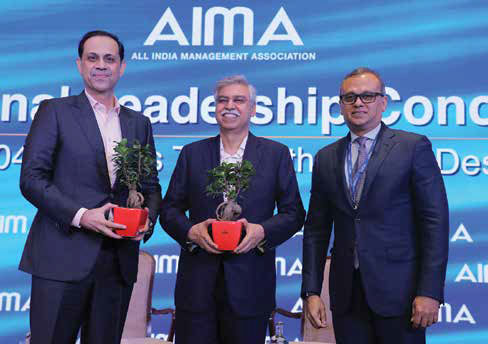 In India, we believe there is enough room, but we also believe that given the size and capabilities that we have built, we are now present in just finance. We are present in over 4000 cities and towns around the country and for the first time, actually, earlier this year, the management presented its long-term strategy five-year strategy to investors because there was a lot of noise in the market about the stock and the performance of the company. And given the heightened exposure to any large company in India, we felt that rather than any information leaks out, we also finance nearly 45,000 people. We said, Let’s put it out, of course not in very high level of detail.
In India, we believe there is enough room, but we also believe that given the size and capabilities that we have built, we are now present in just finance. We are present in over 4000 cities and towns around the country and for the first time, actually, earlier this year, the management presented its long-term strategy five-year strategy to investors because there was a lot of noise in the market about the stock and the performance of the company. And given the heightened exposure to any large company in India, we felt that rather than any information leaks out, we also finance nearly 45,000 people. We said, Let’s put it out, of course not in very high level of detail.
We do plan in the next couple of years to get into the microfinance segment. We earlier this year earlier last year, expanded presence in two wheelers. We are doing all branded two wheelers now; in the next 12 months we will enter the four-wheeler space. We will enter the rural tractor space and at some point then microfinance as well. So, because the business is so attractive first, you already had some of the largest groups in the business. And with the kind of growth it is showing, it is attracting more and more attention, including groups like Reliance now throwing their hat in the ring.
What do you imagine? Will be the competitive landscape going forward in the short term to medium term future, especially because many things have become easier now because of digital technologies.
So, a few large companies or groups that have significant access to customers because of existing businesses and Reliance clearly is one of them have the advantage of a ready customer base. But building the right set of capabilities to manufacture financial products and sell them takes time. There isn’t a technology system out there or a risk model that you can buy and implement. So, a lot of it is actually learning exponential learning, which will take time. But just look at Bajaj Finance – with the kind of growth we are less than 2% of the banking sector, so I think the opportunity is tremendous. Yes, probably the top 50 cities. The top 100 cities will see some intense competition in the next 24 months as some of these large players get started. But the opportunity is beyond that, and the opportunity is there to stay.
If I look at e-commerce, which is also like your services, e-commerce is another growth area right now. But a large chunk of the e-commerce business, I’m told as much as 60% is divided just between large companies like Amazon, Flipcart, et cetera. Is that a threat for you? Are they taking business away from you, or are they creating a new opportunity for you?
See, fortunately for us, we are an enabler. So, we are present in physical stores. We are present in 100 and 50,000 stores around the country. Whether you’re buying a mobile phone or a television or a refrigerator or you’re buying a shoe or groceries or fitness equipment, we are present online with all the large platforms, whether it’s Reliance, whether it’s Amazon, whether it’s Flipcart, because we end up being an enabler, whether it is to give loan payments, we’ve rolled out our payment offerings, for example. We have 35 million digital, store cards now. So, it is an intelligent payment platform that we have put in place. You can get insurance and the intelligence that we are trying to build through our app, which is also what we link with all these other platforms, is if you are going to go and buy refrigerator or a television, can I prompt you to where the best deal is on which of my financial products? So that, you start using payments more intelligently, we will get there over a period of time as well. So, we end up complementing the real world. And to that extent, fortunately, we do not face their competition head on.
ABOUT
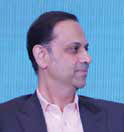 Sanjeev Bajaj is from the Bajaj family, heading Bajaj Finserv, India’s fastest growing and most diverse financial services company. He is the great grandson of JamnaLal Bajaj and the younger son of Rahul Bajaj.
Sanjeev Bajaj is from the Bajaj family, heading Bajaj Finserv, India’s fastest growing and most diverse financial services company. He is the great grandson of JamnaLal Bajaj and the younger son of Rahul Bajaj.
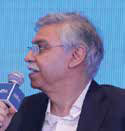 Sunil Munjal is an Indian businessman and the chairman of Hero Enterprise. Founder of India’s Serendipity Arts Festival, he is the chairman of the board of governors of The Doon School. He is the youngest son of Brijmohan Lall Munjal. In 2014, Munjal founded the BML Munjal University and currently serves as its chancellor.
Sunil Munjal is an Indian businessman and the chairman of Hero Enterprise. Founder of India’s Serendipity Arts Festival, he is the chairman of the board of governors of The Doon School. He is the youngest son of Brijmohan Lall Munjal. In 2014, Munjal founded the BML Munjal University and currently serves as its chancellor.

